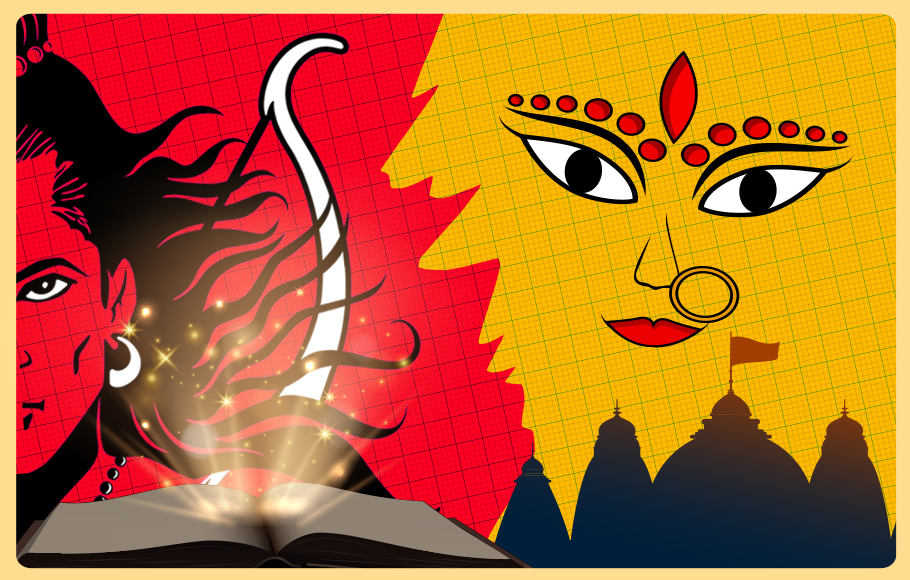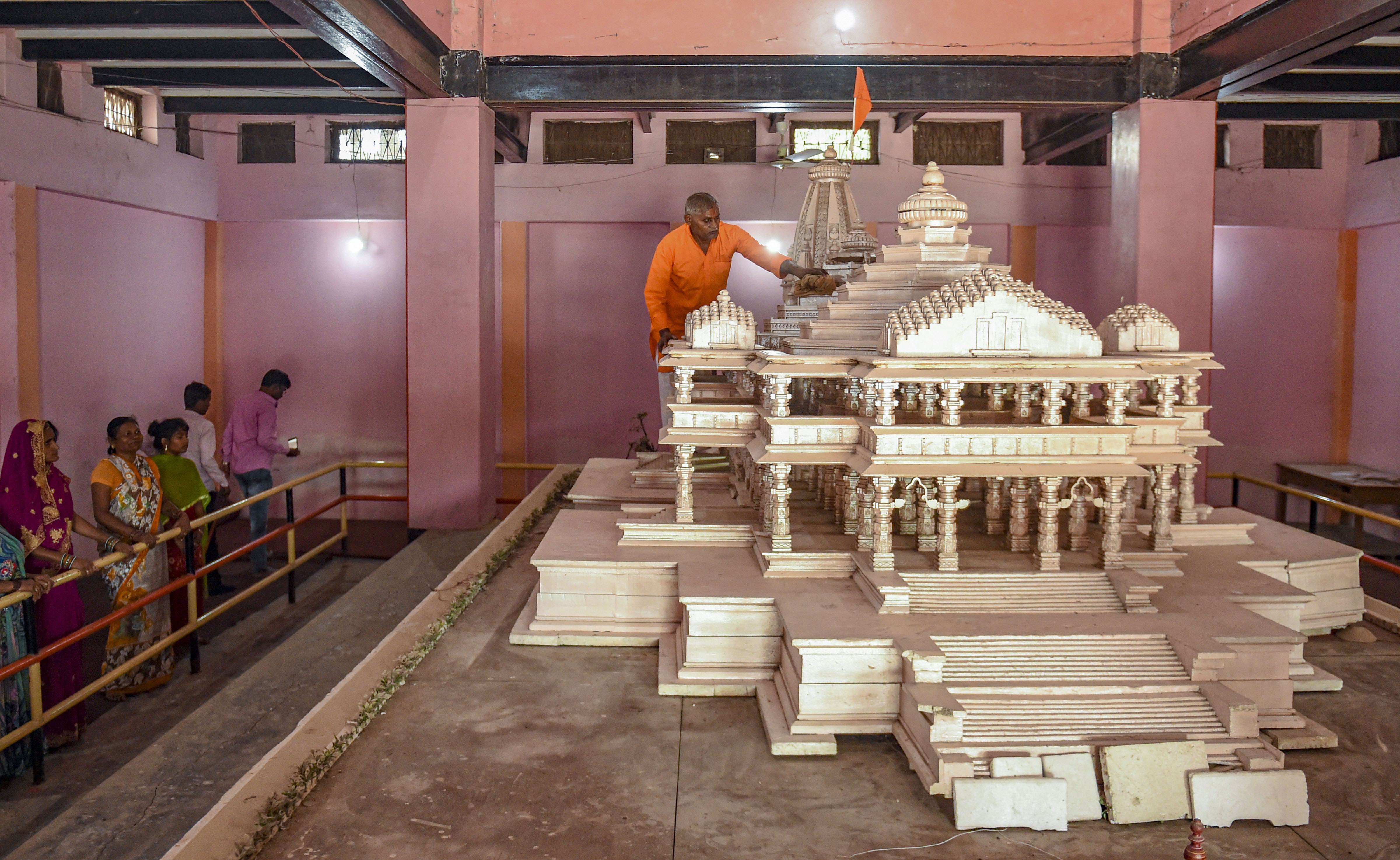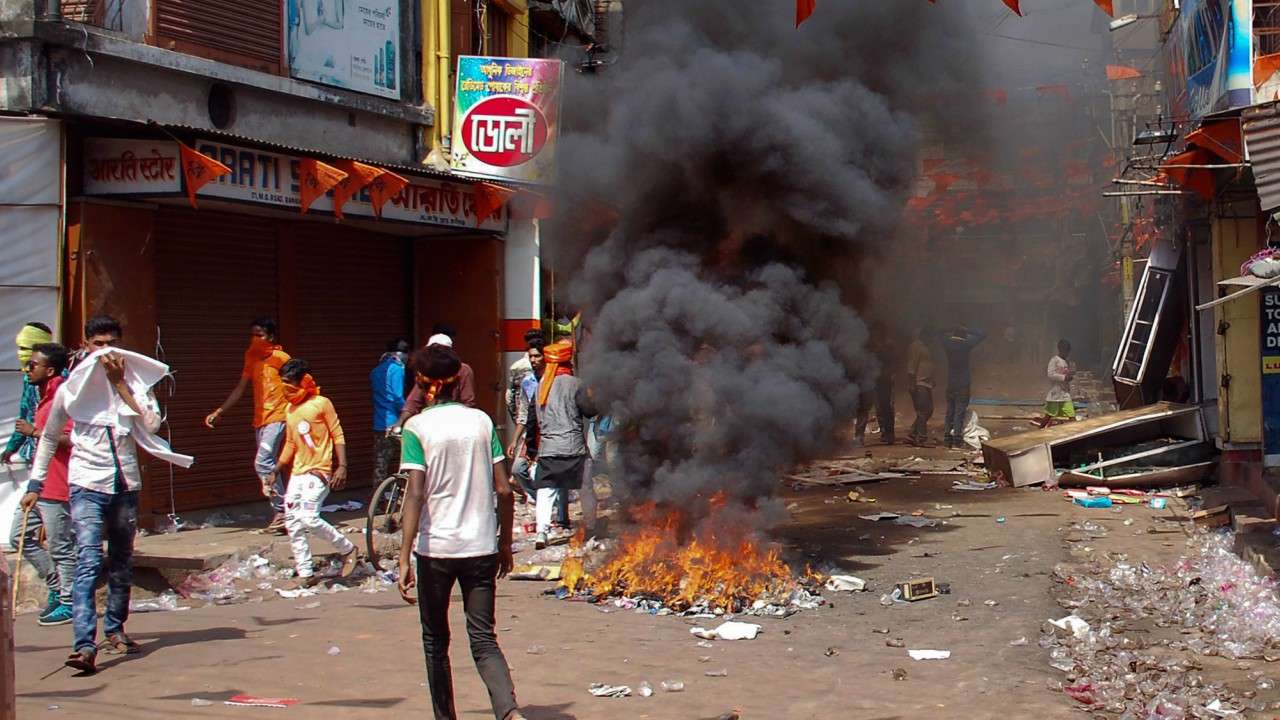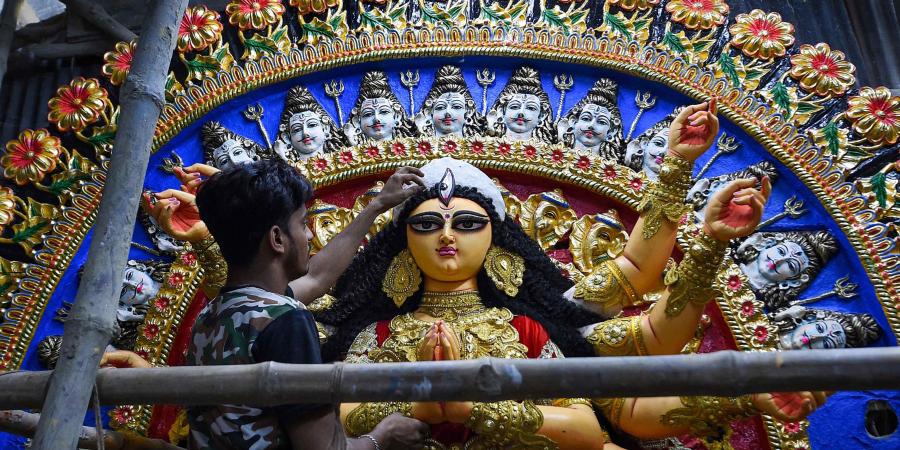
- Home
- News
- Analysis
- States
- Perspective
- Videos
- Education
- Entertainment
- Elections
- World Cup 2023
- Features
- Health
- Business
- Series
- Economy Series
- Earth Day
- Kashmir’s Frozen Turbulence
- India@75
- The legend of Ramjanmabhoomi
- Liberalisation@30
- How to tame a dragon
- Celebrating biodiversity
- Farm Matters
- 50 days of solitude
- Bringing Migrants Home
- Budget 2020
- Jharkhand Votes
- The Federal Investigates
- The Federal Impact
- Vanishing Sand
- Gandhi @ 150
- Andhra Today
- Field report
- Operation Gulmarg
- Pandemic @1 Mn in India
- The Federal Year-End
- The Zero Year
- Premium
- Science
- Brand studio
- Home
- NewsNews
- Analysis
- StatesStates
- PerspectivePerspective
- VideosVideos
- Entertainment
- ElectionsElections
- Sports
- Loading...
Sports - Features
- BusinessBusiness
- Premium
- Loading...
Premium

How deep has BJP's 'Ram baan' stung Bengal
Several centuries after 15th century Bengali poet Krittibas Ojha tried to mainstream Rama in Bengal by depicting him as a devotee of Durga, another movement is now being launched to reinvent the mythical hero in the state.

As Rama geared up for the decisive battle against Ravana to rescue his abducted wife Sita, the Maryada Purushottam kneels down in front of goddess Durga and asks for her blessings. To please the goddess, whom he was invoking in the uncustomary season of autumn, Rama offered one of his eyes, which resembled the neel kamal (blue lotus), as he could manage to get only 107 of them instead of...
As Rama geared up for the decisive battle against Ravana to rescue his abducted wife Sita, the Maryada Purushottam kneels down in front of goddess Durga and asks for her blessings. To please the goddess, whom he was invoking in the uncustomary season of autumn, Rama offered one of his eyes, which resembled the neel kamal (blue lotus), as he could manage to get only 107 of them instead of the mandatory 108 offered to Durga.
This is how the countdown to the battle of Lanka begins in 15th century Bengali poet Krittibas Ojha’s version of the epic.
Several centuries after Ojha tried to mainstream Rama in Bengal by depicting him as a devotee of Durga, another movement is now being launched to reinvent the mythical hero in the state. This time around, he is being projected as a mascot of aggressive Hinduism with his devotees wielding swords, unlike the proponents of the Bhakti movement who would immerse themselves in devotional songs and prayers.
One god, several versions
The Bengali Ramayana composed by Ojha is an interesting deviation from Valmiki’s Ramayana believed to be the original version of the epic. According to the Valmiki, Rama worshipped Suriya at the advice of sage Agastya as being Surya vanshi the masculine sun god was his family deity. The Sanskrit hymn Aditya (the other name of Sun) Hrudayam, which till date millions of Hindus recite as prayer to Sun, was believed to have been passed down by Agastya to Rama.
Ojha’s improvisation clearly has two distinct implications. It puts a feminine deity on a higher pedestal than the masculine god. Also, Rama’s story has always been tweaked and twitched to suit different narratives. No wonder, there are as many as 300 versions of the epic, reflecting the popular perspective of the time (of composition) besides the traditions, customs and social life followed in that period.
The presence of various versions of Ramayana also goes on to show that Rama was seen more as a literary character that was open to new interpretations and presentations.
The Bengali literature is full of such critical interpretations of Ramayana, where he is not always necessarily depicted as a hero.
More than Rama, it was Sita who evoked sympathy and won accolades in most of these literary works—be it by medieval Bengali poetess Chandrabati or modern day poetess Mallika Sengupta.
Another interesting aspect of Ojha’s improvisation was that he brought in Durga, the main goddess from the pantheon of Shaktism, to Ramayana, an epic dedicated to Vaishnavite deity Rama, clearly sending a message of inclusion to the followers of two Hindu denominations who had lot of differences.
Shaktism in Bengal is strongly connected to another Hindu denomination Shaivism, or worshipping of Shiva, depicted as the husband of Shakti deities Durga and Kali. Shaktism and Shaivism were often at odds with Vaishnavism. Hence, Ojha’s description of Rama worshipping Durga can be viewed as an attempt to forge social unity.
It’s another matter that Rama who came into prominence in Bengal with the gaining acceptance of Bhakti movement in the 15th century, eventually lost out to Krishna in the mainstream of Bengali Vaishnavism also called Gaudiya Vaishnavism, popularised by Chaitanya Mahaprabhu, the 16th century saint and social reformer.

Rama and rancid rhetoric
The driving force behind this neo-Rama movement in Bengal launched by the BJP and other outfits of its larger Hindutva family, many in the state are now convinced, is mostly hate and not love. And the objective is clearly to make political gains through polarisation, they argue.
So much so that this deviation—from the traditional concept of Rama as depicted by Ojha—created huge furore among some Bengali intellectuals who even went to the extent of dismissing Rama as an alien to Bengali culture and religious beliefs. More so as the main religious festivities of the state—Durga Puja, Kali Puja and Eid—transcend religious divides with the participation of people from different faiths.
Taking a serious exception to the BJP’s use of the slogan ‘Jai Shri Ram’ to drum up religious frenzy, Nobel laureate Amartya Sen observed that the slogan was not part of the culture of the state where ‘Maa Durga’ was omnipresent.
“I sometimes wonder if these Jai Shri Ram walas have ever heard of goddess Saraswati. That is who we Bengalis worship. The goddess of learning, knowledge, wisdom. And we respect women. That is why we also worship Durga and Kali. Jai Shri Ram huh!” television personality and author Pritish Nandy tweeted earlier.
In the face of an organised movement with a set goal, such media outrage appeared only to be a whimper incapable of drowning out the growing cacophony of ‘Jai Shri Ram’ chants.
“I was surprised to hear a fish vendor in Lake Market greeting a few of his regular customers with Jai Shri Ram, which was something unheard of in Kolkata even some months ago,” says amateur mythologist Bhivakar Chatterjee.
The craze witnessed during the recent Ram temple bhoomi poojan celebrations in Ayodhya in Uttar Pradesh was unprecedented. This surprised many old-timers mainly because such enthusiasm was not seen in the state even during the peak of the Ram temple movement three decades ago.
BJP supporters offered yagna in various places in the state defying a bi-weekly complete lockdown (in the wake of coronavirus) on the day of the foundation laying ceremony. In some places they clashed with the police after being prevented from mass gatherings.

For the past few years, Ram Navami, the birthday of Rama, has become an important religious event in the state. “However, it is often marked by violence as the so-called devotees of the lord use the opportunity to demonstrate their strength and flex their muscles,” says TMC MLA Jayanta Naskar.
Amid chants of ‘Jai Shri Ram’, hundreds gathered to celebrate the day in various parts of the state in April this year, again flouting the lockdown imposed to prevent the spread of COVID-19.
While the BJP started using Rama as a political ladder in the late 1980s in rest of India, the phenomenon entered somewhat late in Bengal largely due to strong opposition from Left parties in the 1980s and 90s.
Many claimants of Rama
However, the BJP is not the first to politically encash Rama. Back in the 1920s, peasant leader of Awadh, Baba Ram Chandra, encouraged the use of “Sita-Ram” instead of “Salaam” as a greeting.
It is, however, not clear how ‘Jai Shri Ram’ started trending in everyday conversations since traditionally Rama has always been hailed jointly with his wife Sita (Jai Siya Ram) and referred to as Siyavar Ramchandra (Sita’s husband Ramchandra). One theory is that ‘Jai Shri Ram’ as slogan was popularised by Ramanand Sagar’s television adaptation of Ramayana telecast by Doordarshan in 1980s.
Whatever be the background, the slogan has emerged as a most divisive but politically potent catchphrase that has helped the BJP conquer many Indian states. The party now is hoping the slogan will become equally effective in Bengal as it gears up for the crucial Assembly elections in 2021.
To counter the growth of this political Rama, the ruling Trinamool Congress and other detractors of the BJP are now promoting Durga, Kali and other goddess as the presiding deities of Bengal, relegating Rama as an outsider.

More the merrier
For that matter, the TMC-led state government even started providing funds to Durga puja committees to promote the festival.
For the past couple of years, the state government is also organising a Durga Puja carnival that showcases idols from prominent puja committees of the city and its adjoining districts in a colourful road show at the iconic Red Road.
Last year, the TMC and the BJP leaders also competed among themselves to get into various Durga puja organising committees. This year, however, due to COVID-infused restrictions, Durga puja is likely to lose some of its fervours, but not the political intensity.
In this political pitting of one deity against another, the message Ojha tried to convey through his version of the Ramayana seems to have lost. The famed Ram baan—the arrow of Lord Rama that ‘never’ missed the target—has been replaced by the lethal sting of hate politics, adds Chatterjee.
Sadly, hate politics, too, never misses its target. “This mixing of religion with politics is not limited to election politics or election-time.” The poison, Chatterjee feels, has spread deep into every occasion and everyday life.

